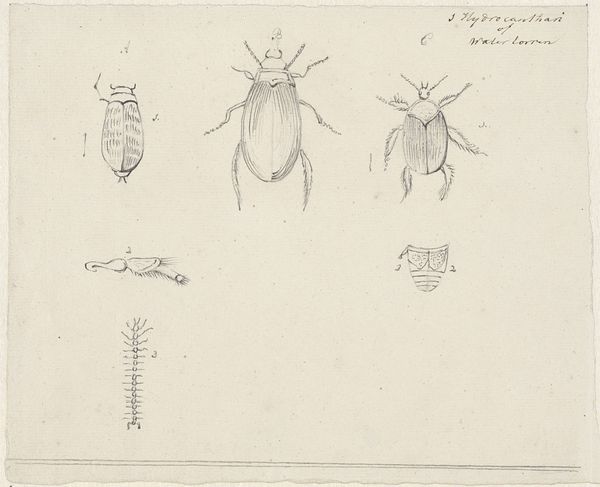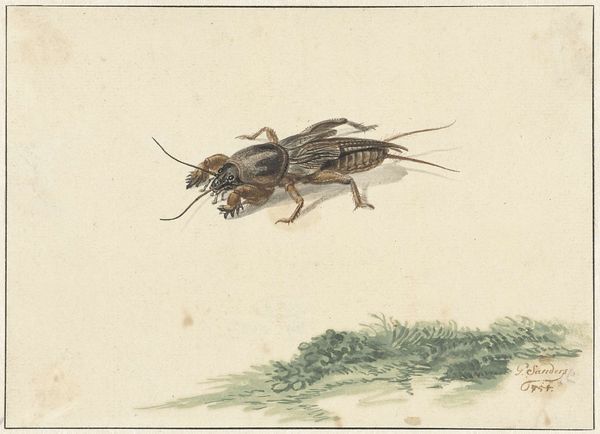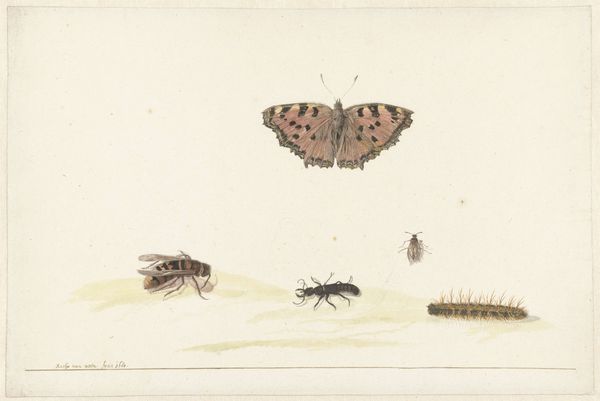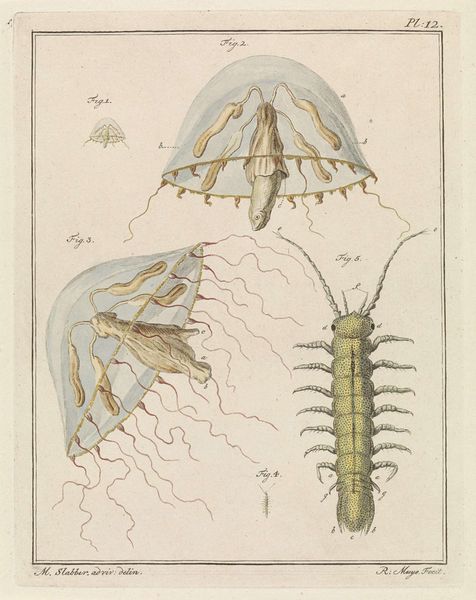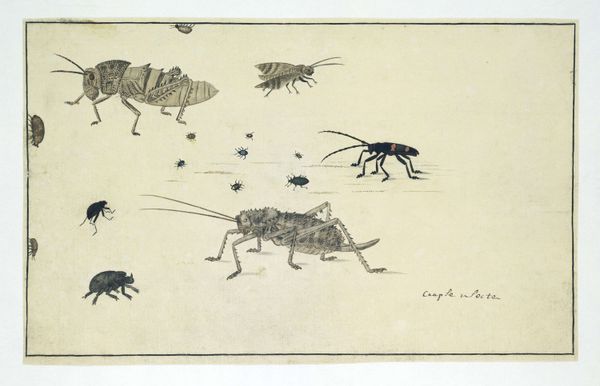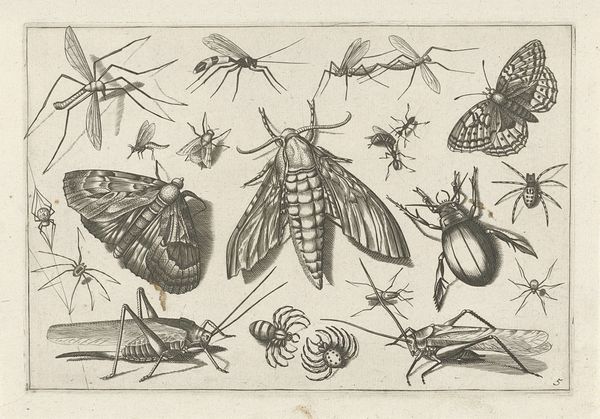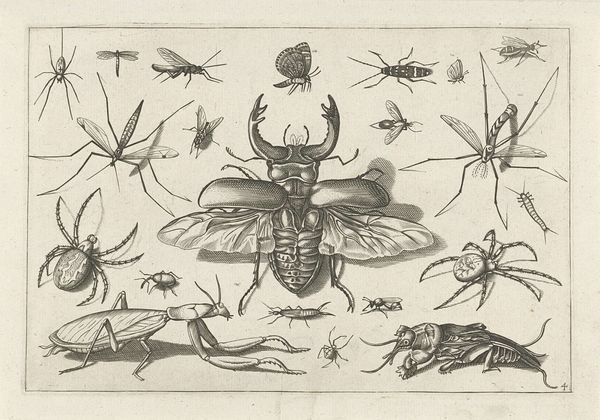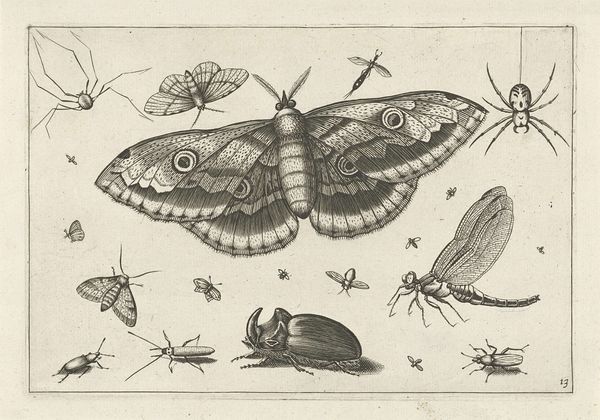
drawing, paper, ink
#
drawing
#
baroque
#
paper
#
ink
Dimensions: height 140 mm, width 180 mm
Copyright: Rijks Museum: Open Domain
Editor: Here we have "Two Insects" by Rochus van Veen, dating back to 1674. It’s an ink drawing on paper, and there's a kind of stillness to it despite the subject matter. They feel like specimens carefully observed. What do you see in this piece? Curator: Well, these insects, rendered with such precision, speak volumes about the burgeoning scientific interest during the Baroque period. But consider also the symbolic weight often assigned to insects – from representing fragility and ephemerality to the darker associations of disease or decay. Editor: I hadn’t thought about those symbolic connections. It's interesting, this detailed rendering could be scientific, yet these associations add a whole new layer of meaning. Curator: Exactly! It invites us to consider the power dynamics inherent in observation, who is granted the power to name, classify, and ultimately, control nature? Consider, too, the socio-political context of the Dutch Golden Age, a period of intense trade and colonial expansion. How might this drawing also subtly reflect the era’s exploitation and quest to dominate the natural world? Editor: So, beyond just being pretty pictures, these drawings are reflections of the period’s anxieties about its own place in the world? Curator: Precisely! What begins as a simple depiction of nature actually engages with some powerful themes of knowledge, control, and representation that continue to be debated today. How does the role of the artist connect with larger sociopolitical narratives and cultural values? Editor: I'll definitely look at insect drawings differently from now on. It's fascinating to unpack all those layers. Curator: Art can open our minds.
Comments
No comments
Be the first to comment and join the conversation on the ultimate creative platform.
